Veneered panels in the interior

Veneer panels are an affordable finishing material that can beautify any interior design. They look solid and elegant, quick and easy to install, resistant to external influences. Taking into account the many advantages of these modern products and their affordable price, we can say that this is one of the best solutions for choosing a finish, both in terms of design and operation.
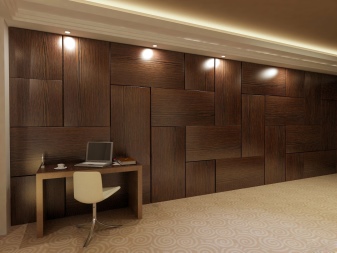

Description
Veneer is a sheet cut of wood with a minimum thickness... Moreover, the material has such properties of natural wood as structure and a beautiful natural pattern. This is a sought-after finish for the ceiling and walls, and thanks to the variety of types, there is a choice of a wide variety of styles for decorating a living space.
Veneer cladding helps to make the interior extraordinary, while at the price it is an affordable material. The cost of the panels is also due to the fact that chipboard, gypsum board or MDF boards are used as the basis.

Veneered panels also have other advantages:
- high heat-saving and soundproof characteristics;
- resistance to high humidity;
- the possibility of repair in case of damage - the product can be simply replaced;
- easy cleansing of dirt - you can remove them with a damp cloth and a simple detergent, without resorting to aggressive household chemicals;
- quick easy installation, while perfect alignment of the walls is not required;
- variety of colors and textures;
- presentable, attractive appearance;
- compared to the material made of solid wood, veneer panels are lighter, which makes the installation process easier;
- paneling is perfect not only for the main surfaces - the ceiling and walls, but also for decorating floors, furniture, and creating decorative ornaments.
Veneer panels can be successfully used to decorate the hall, living room, office - and this is also an undoubted advantage over other finishing materials. The sizes of the panels are different, which makes it possible to use them as cladding or design elements, and different textures allow them to be combined in the same interior.
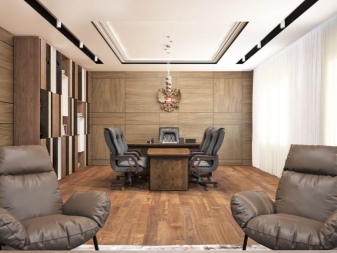
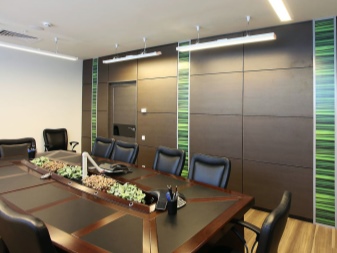
If desired, the panels can be installed on their own, since the installation process is not complicated. For example, if the wall or ceiling is well aligned, the panels can simply be glued onto them.
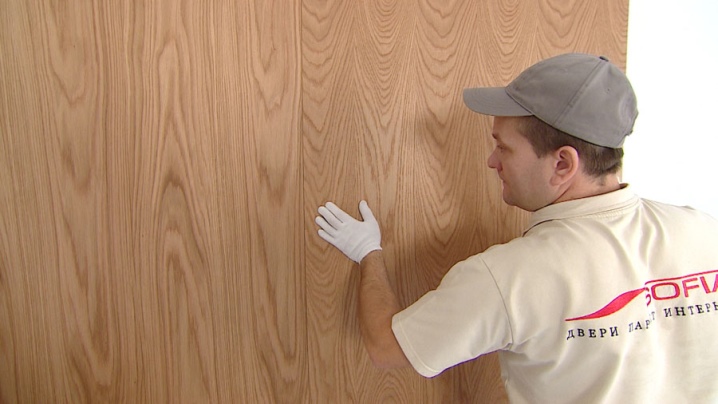
The disadvantages include the need for proper care and protective varnish application on products coated with cheap softwoods.
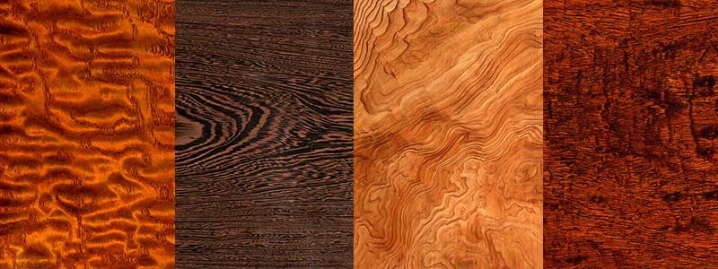
What are they?
For the manufacture of the material, ordinary and valuable types of wood are used, such as birch, alder, oak, but it can also be an imitation of real wood.
The properties of natural veneer are similar to those of natural raw materials; the material does not require additional processing. In contrast, a surrogate veneer (fine-line) is made on the basis of inexpensive wood by gluing several layers, pressing and imparting a certain texture, color and ornament. This allows you to create panels of exceptional beauty and originality, although their appearance is sometimes far from natural.


Veneered products, as veneer panels are also called, are adapted to different substrates, but, as a rule, these are wood-based panels, the raw material for the manufacture of which is the waste of woodworking enterprises.
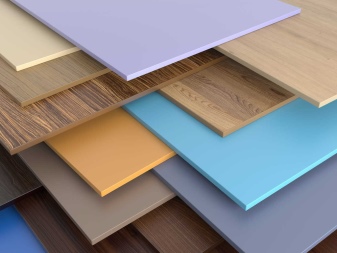
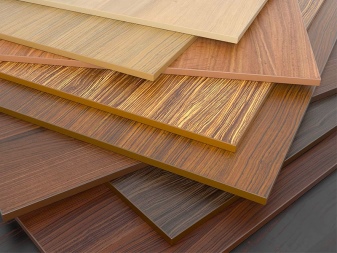
The most common base materials for veneer sheets are MDF and chipboard.
- MDF - wood fiber material, especially durable due to its high density. Such panels are resistant to moisture, safe for human health, and durable to use.
- The basis of the panel can be chipboard. This type of material looks beautiful and has a low price, but is less resistant to moisture and requires more careful care - it can crack if it is not properly dried.

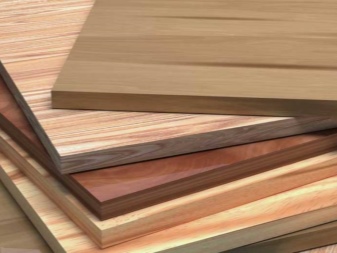
Decorative veneered 3D panels made using modern technologies are very popular. Basically, these are MDF wall panels, additionally protected with a special coating. The polymer film on their surface is resistant to temperature extremes and moisture, but also such a skin is virtually insensitive to mechanical stress and deformation.
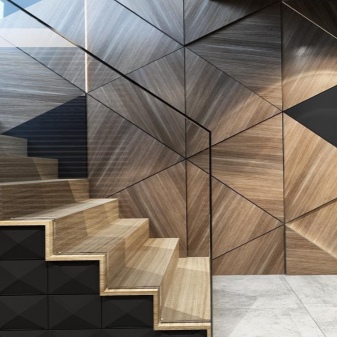
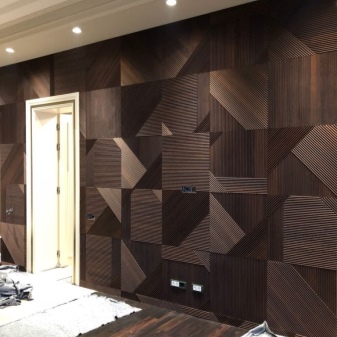
Volumetric panels are the most demanded product, implying high quality and elegant design. When facing walls, they can be painted, given the desired texture, pasted over with foil, varnished in various ways, or made the veneer structural by gluing.
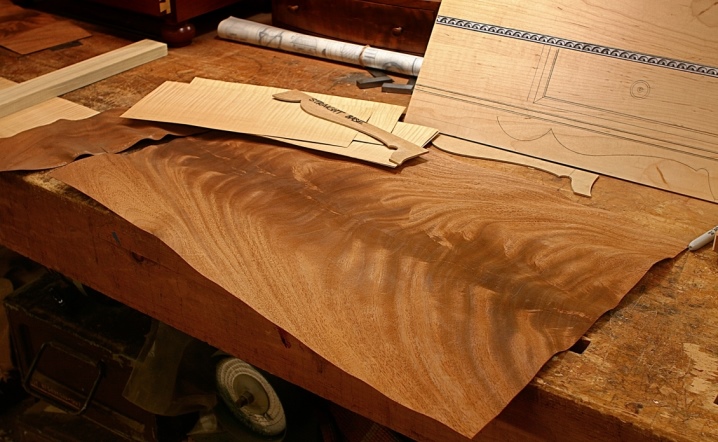
Thanks to the content of natural organic components, veneered embossed panels allow the walls to breathe, and the method of joining them using decorative strips (rustic materials) helps to make the joints invisible.
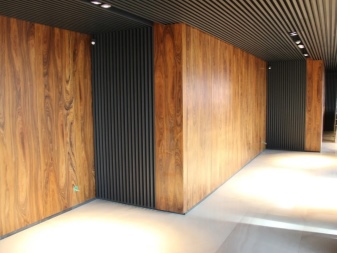
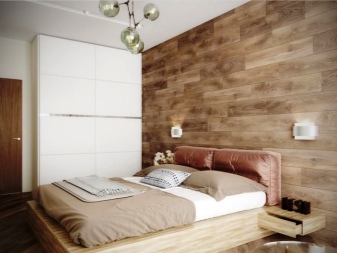
However, this product also has its drawbacks: 3D panels require careful maintenance, they accumulate dust and are subject to aggressive environmental influences. And also it is undesirable to get sunlight on them. In addition, they are more expensive than conventional cladding.
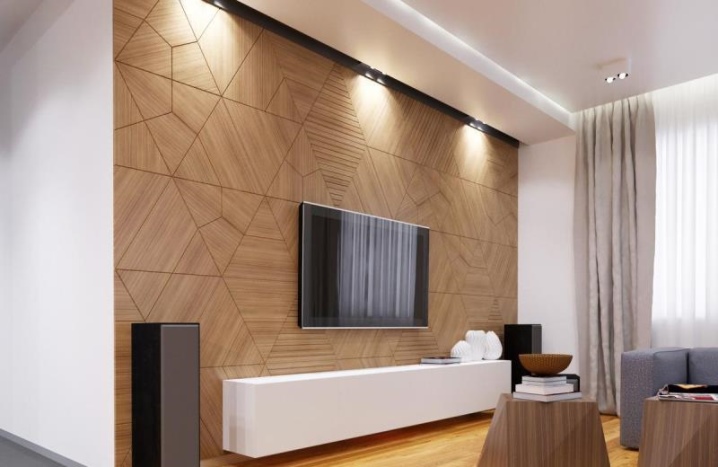
By the way, such a finish can be based not only on wood slabs, but also on the basis of drywall. Fine-line materials have low flammability and moisture resistance.
Despite the fact that they do not have such characteristic elements of natural wood as wormholes and knots, they perfectly reproduce any natural patterns of different types of trees.

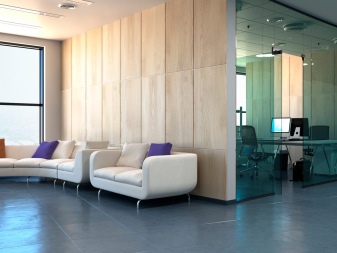
You can often find veneered products with a PVC base. Their main advantages are lightness, plasticity, any combination of shades, durability, not counting melting with strong overheating.

Where are they used?
Veneered panels are the traditional choice of designers. They are in high demand for the decoration of public and residential premises.
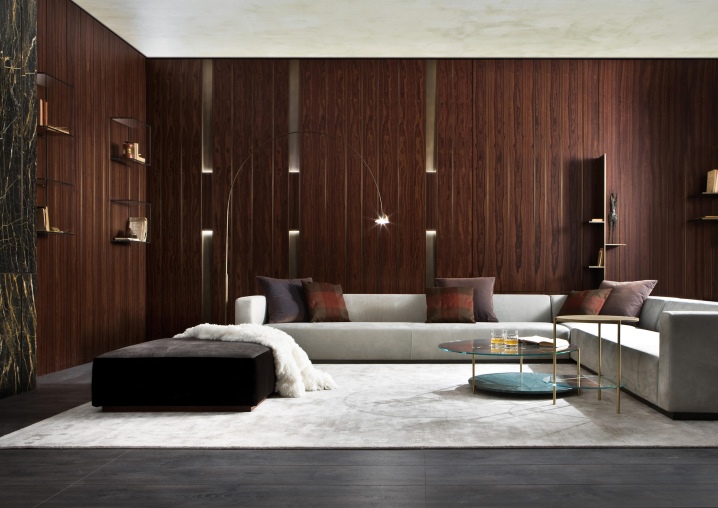
This finish has a wide range of applications:
- panels are used for ceilings and walls with a smooth transition of the pattern;
- to create partitions between different functional areas;
- in a wooden house, the sheathing will serve to effectively decorate the area around the fireplace;
- the finishing material can be used to frame the columns;
- MDF, veneered with beech and oak, are used to decorate the facades of furniture, dressers and wardrobes, for interior doors, and other interior items;
- due to the non-exposure to moisture, the panels can be tiled in the bathroom;
- in the living room or hallway, the decoration will look presentable, pleasantly indicating the high status of the owner.
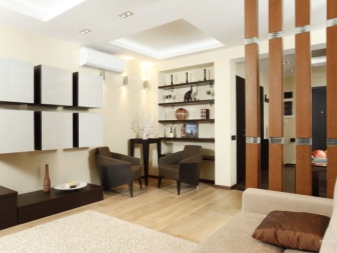
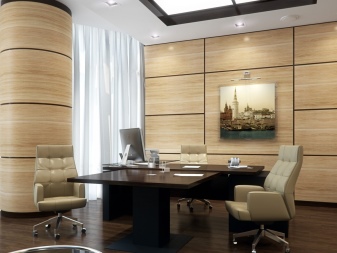
The panels, veneered with thin wood sheets, are perfect for highlighting special places in the house, so they can be used anywhere. Along with this, wall and ceiling products are not just decoration - their use allows you to protect the room from extraneous sounds and significantly insulate it.
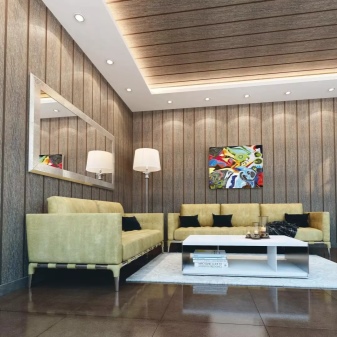
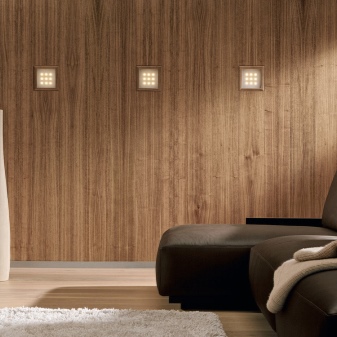
Beautiful examples in the interior
A versatile material with a natural veneer texture will be appropriate in any interior.
- Bedroom in soothing colors with the combined use of wall, ceiling and floor panels of different textures. The noble muted shade of veneered surfaces perfectly matches black, white, any shades of gray used in furniture upholstery. Houseplants will serve as a great addition.
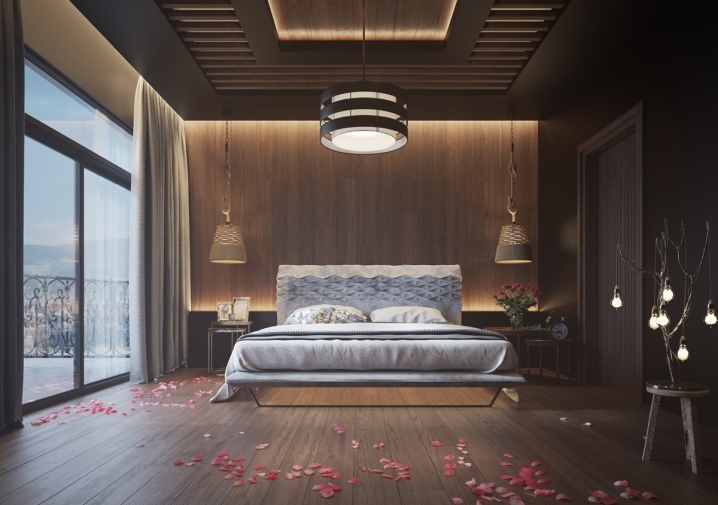
- The material is suitable for decorating a wall surface in the area where the TV is located. In this case, it is important to choose the right lighting, complementing the interior of the room with pieces of furniture with a similar wooden coating.
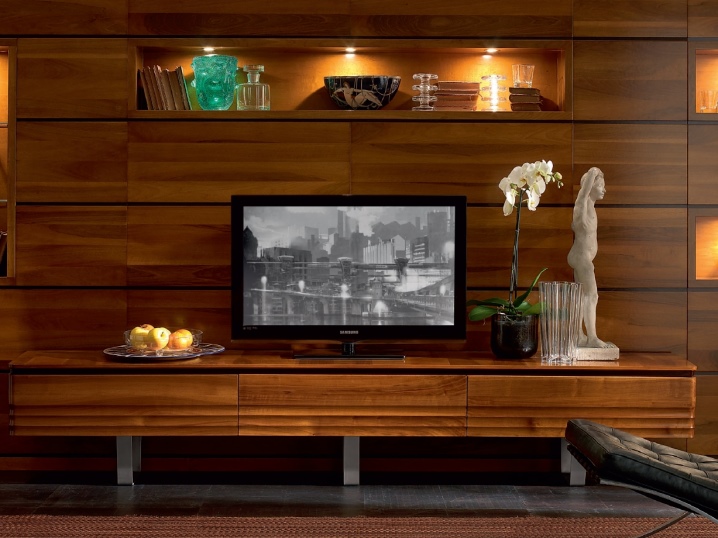
- Veneered panels will create a cozy atmosphere in living room, especially if they are used to decorate the fireplace area. Several decorative details in eco-style will complete the look.
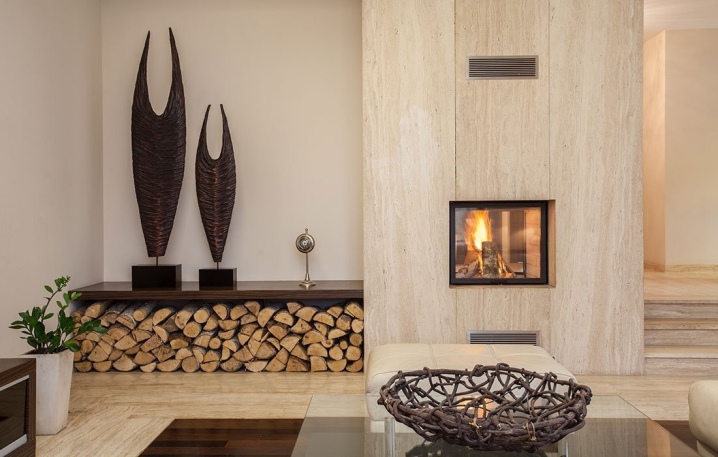
- Light slatted panels will help make a small kitchen... A similar finish is also appropriate for the corridor and bathroom. Light shades go well with dark wood furniture and pastel tiles.
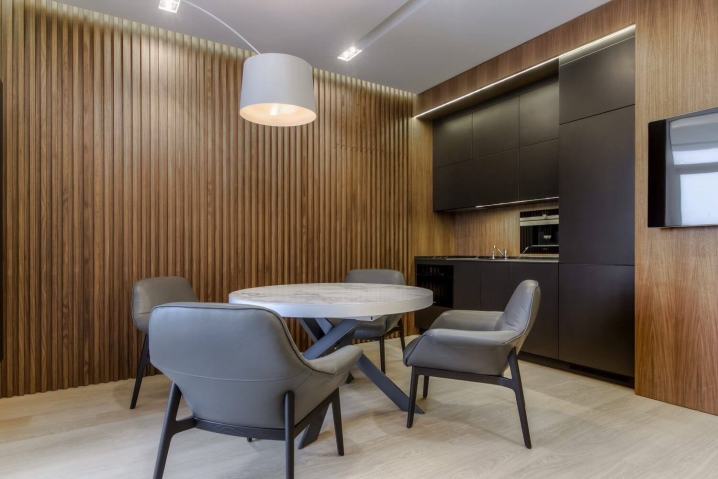
The love of designers for this material, of course, with a high-quality finished surface, is easy to explain.
The veneer panel is more durable and looks much better than natural wood, due to the fact that it does not have the typical imperfections of real wood.
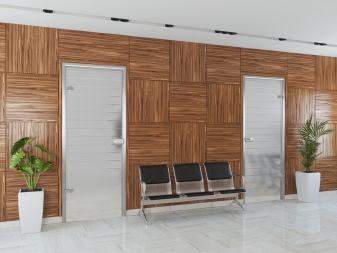
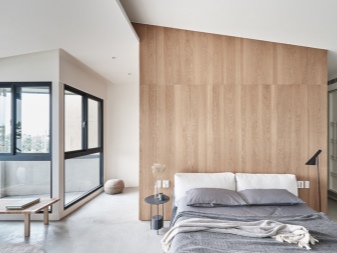
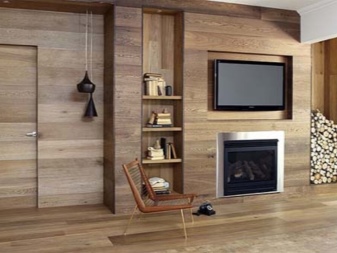
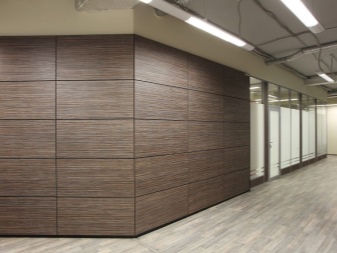
See below for how veneered panels look in the review of a three-room apartment.













The comment was sent successfully.